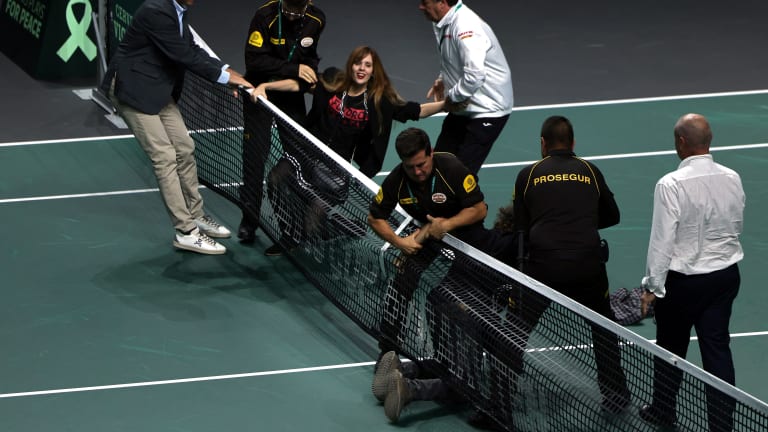News
Climate activists interrupt Croatia-Spain match, tie themselves to the net during Davis Cup Finals
By Nov 23, 2022News
Adrian Mannarino headbutts racquet butt cap and draws blood, recalling Mikhail Youzhny
By Jan 03, 2024News
22-year-old Iga Swiatek to surpass 20 million dollars in career prize money
By Aug 28, 2023News
20-year-old Carlos Alcaraz surpasses 20 million dollars in career prize money
By Aug 21, 2023News
The ITF's Katrina Adams stays on the front lines for women with the Tory Burch Foundation Sports Fellowship
By May 02, 2023News
Daniil Medvedev, Stefanos Tsitsipas hit major career prize money milestones after Monte Carlo
By Apr 17, 2023News
Petra Kvitova on that tie-break against Rybakina: “I think it was the longest one I ever played in my life”
By Apr 02, 2023News
Barbora Krejcikova surpasses $10 million in career prize money after Indian Wells
By Mar 20, 2023News
Carlos Alcaraz gives shelter to ballkid as rain starts pouring in Rio
By Feb 22, 2023News
Gabriela Sabatini among packed crowd in Buenos Aires to watch Carlos Alcaraz’s comeback match
By Feb 16, 2023Climate activists interrupt Croatia-Spain match, tie themselves to the net during Davis Cup Finals
In an increasingly familiar move, the protesters made it onto the court during a live match—with players standing just yards away—before being apprehended.
Published Nov 23, 2022
Advertising
Advertising

In an increasingly familiar move, the protesters made it onto the court and attempted to tie themselves to the net before being apprehended.
© AFP via Getty Images